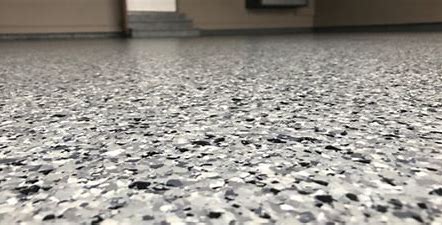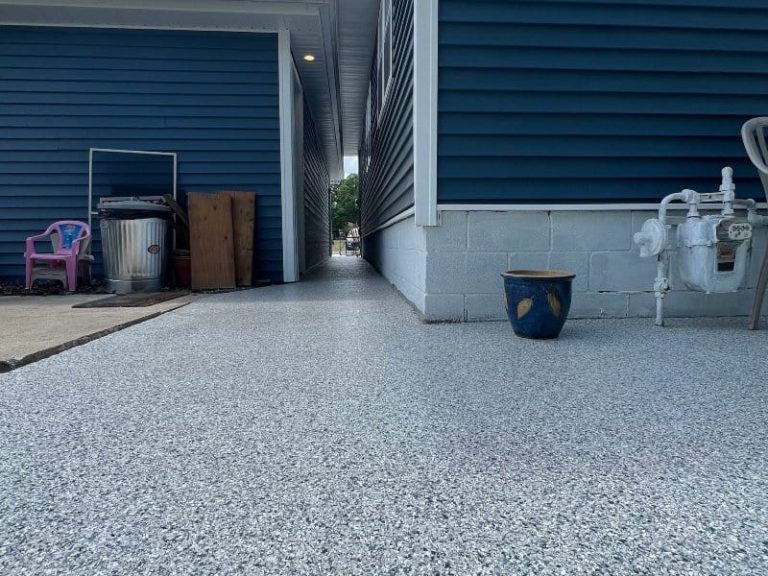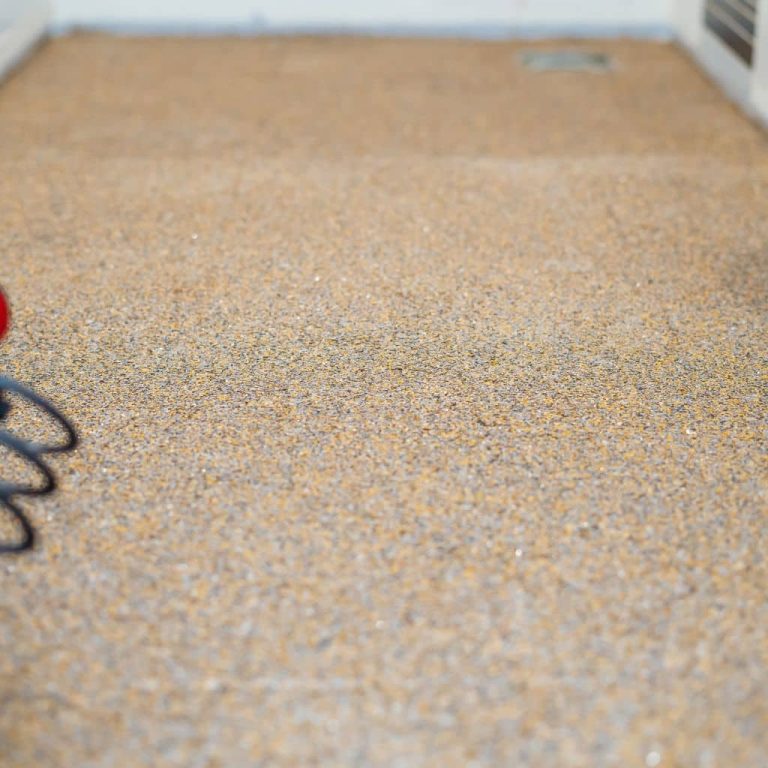Garage floor coatings come in many varieties, but two of the most frequently discussed options these days are epoxy and polyurea. Each has its benefits, and both can transform a drab concrete floor into a high-performance surface that resists chemicals, impacts, and common signs of wear. Yet, as technology advances, more industry experts consider polyurea polyaspartic systems to be the top choice—especially for homeowners who want both longevity and flexibility.
If you’re curious about the disadvantages of polyurea, how it compares to epoxy, and whether it’s truly worth the investment, this guide is for you. Drawing on insights from coating expert Crayton Caudill, you’ll discover what makes polyurea so appealing, how much a typical garage floor might cost to coat, and why a polyurea base with a polyaspartic top coat may well be the best garage floor coating available in 2025.
Why Garage Floor Coatings Matter
Concrete floors may seem tough enough to handle everyday life in your garage. After all, concrete is meant to withstand cars, lawn equipment, sports gear, and everything else you throw at it. However, uncoated concrete remains porous and prone to cracks over time, especially in regions with temperature extremes. Moisture seeps in, stains accumulate, and chemical spills can lead to permanent marks or even deeper damage.
A high-quality floor coating not only upgrades the look of your garage, but it also safeguards the underlying slab, maintaining its structural integrity and preventing more expensive fixes later. The result can be a sleek, easy-to-clean space that feels like a polished extension of your home rather than a dingy afterthought.
Polyurea vs. Epoxy: The Ongoing Debate
Talk to any contractor or homeowner about garage floors, and you’re likely to hear strong opinions on epoxy or polyurea. Epoxy has dominated for decades, largely due to its affordability and accessibility. But with the rise of polyurea—and its polyaspartic top-coat cousin—many professionals now champion these more advanced solutions.
What Is Polyurea?
Polyurea is an elastomer, meaning it retains some flexibility even after curing into a hardened protective layer. This elastic property allows the coating to bend slightly when the concrete expands or contracts because of temperature changes. Epoxy, by contrast, is more rigid, leaving it susceptible to cracking or peeling when the slab shifts.
Polyurea’s rapid cure times, strong chemical resistance, and general ease of cleaning have made it increasingly popular in industrial and commercial contexts. Now, homeowners are discovering these same benefits for residential garages, basements, and other indoor or outdoor concrete surfaces.
Comparing Key Features
- Flexibility:
- Epoxy: Rigid
- Polyurea: Flexible (this means fewer cracks and longer lifespan)
- Thickness:
- Epoxy: Often goes down in thicker layers
- Polyurea: Thinner application, but generally stronger
- Cure Time:
- Epoxy: Requires multiple days to cure fully
- Polyurea: Can cure in hours, letting you use your garage sooner
- UV Resistance:
- Epoxy: Tends to yellow under sunlight
- Polyurea: Better color stability, especially with a polyaspartic top coat
- Long-Term Durability:
- Epoxy: 5–10 years, depending on conditions
- Polyurea: 15–20+ years with proper installation
Disadvantages of a Polyurea Coating
No product is perfect, and polyurea is no exception. Although it has many advantages over epoxy, there are a few noteworthy drawbacks:
- Not Moisture Tolerant
One of the main disadvantages of a polyurea coating is its limited tolerance for moisture. If a concrete slab has high moisture levels—common in certain climates or in basements—applying polyurea directly might lead to bonding problems or premature failure. In these scenarios, a moisture vapor barrier is typically required. By installing this barrier, you help block the migration of water vapor from the ground into the slab, allowing polyurea to adhere properly and last longer. - Thinner Coating
Polyurea is typically applied in a thinner layer compared to a traditional epoxy. This difference can surprise homeowners accustomed to the thicker, resin-like look of epoxy floors. However, polyurea compensates for its thinner application with superior tensile strength and flexibility, so the finished surface is often just as durable—if not more so—than a thicker epoxy layer. - Higher Upfront Cost
While not mentioned in the transcript snippet above, many contractors note that polyurea systems can initially cost more per square foot than lower-grade epoxies. This might concern budget-conscious homeowners. Still, the longer lifespan and decreased risk of cracks or peeling can offset the higher purchase price over time.
Despite these disadvantages, most floor-coating pros emphasize that polyurea’s benefits—from reduced cracking to better UV stability—far outweigh any minor drawbacks, especially if you’re seeking a coating that lasts for years without frequent reapplications.
Why a Polyurea Base with Polyaspartic Top Coat Is Best in 2025
For the modern homeowner who wants a top-tier garage floor solution, a polyurea base coat topped with polyaspartic (also known as a polyurea polyaspartic system) often stands out as the gold standard. So what makes this combination so effective?
Flexibility and Strength
The polyurea base coat offers the flexibility and elongation necessary to adapt to subtle movements in your concrete slab. This adaptability reduces the risk of cracks and delamination, two of the most common failures for rigid coatings like epoxy.
Decorative Chips and UV Stability
After the base coat, installers typically broadcast decorative flakes into the wet surface. Not only do these flakes add color and texture, but they also help hide small imperfections and provide better traction. The top coat—usually a polyaspartic layer—then locks everything in place, delivering a UV-stable surface that resists fading and yellowing, even in garages with windows or frequent sunlight.
Chemical and Abrasion Resistance
The polyaspartic top coat can also provide enhanced protection from spills, including automotive fluids like oil, antifreeze, and gasoline. If you live in a region that experiences snowy winters, the combined polyurea polyaspartic system resists road salt and other corrosive chemicals that drip off your car. These qualities keep your garage floor looking pristine and functional, regardless of the conditions.
How Much Does It Cost to Epoxy a 500-Square-Foot Garage?
If you’re researching coatings online, you might ask, “How much does it cost to epoxy a garage?” According to Crayton Caudill, his team doesn’t use epoxy at all—they prefer advanced coatings like polyurea. But he notes that coating a 500-square-foot garage (with his preferred system) usually runs between $3,500 and $5,000. Several factors can drive costs up or down:
- Slab Condition
Are there cracks, spalling, or other visible damage? Major repairs increase labor and material expenses. - Vertical Surfaces
Coating steps, baseboards, or walls often adds to the total square footage and complexity. - Additional Treatments
A moisture vapor barrier or extensive surface prep (like diamond grinding) might be needed, also raising the cost. - Design Choices
Opting for elaborate color flakes, metallic effects, or specialized finishes can hike up materials cost.
Although epoxy might be cheaper initially—somewhere between $4 and $7 per square foot for many standard installations—budget epoxy systems frequently fail faster, potentially requiring an expensive removal and reapplication of a better coating down the road.
Is Polyurea Worth the Money?
Ask most professionals if polyurea is worth it, and the answer is a resounding “yes,” especially for homeowners who subscribe to a “do it once, do it right” philosophy. Crayton Caudill stresses that if you install epoxy first and ultimately decide you’d prefer a polyurea system, you face the added cost of grinding off the epoxy before re-coating. That means you might pay more in the long run than if you had simply opted for polyurea from the beginning.
Long-Term Savings
Polyurea’s upfront cost might scare off some people, but it’s wise to consider lifetime costs. A high-quality system can last 15 to 20 years or more with minimal maintenance, whereas budget epoxies may need re-coating or patching within a few years. Factor in professional labor, removal fees, and the inconvenience of having your garage out of commission, and the long-term savings on a polyurea system become clearer.
Aesthetics and Function
Beyond durability, a premium coating often delivers a high-gloss or satin finish that simply can’t be matched by lower-grade products. Whether you’re showing off a classic car or just enjoy a cleaner, more organized garage, many homeowners find the cosmetic benefits alone worthwhile. And if you ever decide to sell your property, a well-maintained, high-quality garage floor can impress potential buyers and possibly boost resale value.
Will Polyurea Crack?
One of the reasons people hesitate to invest in a garage floor coating is fear of future cracking, which can ruin both the look and functionality of the floor. So, “Will polyurea crack?” The short answer: Not very easily.
Because polyurea is more flexible than epoxy or other rigid coatings, it can handle the slight movements and temperature expansions a typical garage floor experiences. Any coating is only as good as the substrate beneath it, and large foundation or structural shifts can eventually cause even the best products to fail. However, in a normal residential setting, polyurea’s built-in elasticity dramatically reduces cracking compared to epoxy.
Surface Preparation Matters
Regardless of the coating you choose, never underestimate the importance of proper surface prep. Professionals often use mechanical methods like diamond grinding or shot blasting to ensure the new coating adheres strongly to the concrete. They’ll also repair cracks, fill holes, and correct other imperfections to create a smooth, uniform surface.
Skipping these steps or attempting a DIY approach without proper tools and experience may result in peeling, bubbling, or other issues that undermine the coating’s benefits. If moisture levels in the slab are high, a reputable installer will recommend or require a moisture vapor barrier before applying polyurea. This crucial step prevents future delamination—one of the only conditions that can prematurely sabotage an otherwise robust floor.
Other Places to Use Polyurea Polyaspartic
While much of the focus here is on garages, polyurea polyaspartic coatings excel in many other areas:
- Basements: Particularly if moisture control measures are in place, these coatings handle foot traffic and potential spills better than carpet or laminate.
- Outdoor Patios and Walkways: The UV stability of polyaspartic top coats makes them ideal for surfaces exposed to sunlight and rain.
- Commercial Spaces: From automotive showrooms to restaurant kitchens, the slip-resistant, durable surface of polyurea can stand up to heavy traffic.
- Pool Decks: Polyurea’s resistance to chemicals and its slip-resistant options make it a safer, more comfortable surface around pools.
Wherever you have concrete in need of protection and a stylistic boost, a polyurea system could be the solution.
Tips for Homeowners Considering Polyurea
- Get Multiple Quotes: Prices can vary among contractors, so it’s best to collect at least two or three quotes for comparison.
- Ask About Warranties: Some installers back their work for 10–15 years, showing confidence in the coating’s durability.
- Check Moisture Levels: If you suspect moisture issues, have them tested before signing any contract.
- Evaluate Your Needs: If you’re on a tight budget and plan to sell your home soon, a basic epoxy might suffice. But if you want long-term protection, polyurea typically offers greater peace of mind.
- Inquire About Timeline: Thanks to fast-curing formulas, many pros can install and finish a polyurea system in a single day, minimizing disruption to your routine.
Conclusion
In 2025—and indeed for years to come—polyurea polyaspartic coatings stand out as the top-tier choice for garage floors. They address many of epoxy’s most persistent drawbacks, offering faster cure times, enhanced durability, and greater flexibility in the face of environmental stresses. While polyurea isn’t entirely flawless—requiring a moisture vapor barrier for damp slabs, going down thinner than epoxy, and costing more upfront—its long-term benefits typically outweigh these inconveniences.
For a standard 500-square-foot garage, you can expect to spend between $3,500 and $5,000 for a professional polyurea polyaspartic system. But that investment translates into a floor that’s easy to clean, resistant to everyday abuse, and far less likely to chip, peel, or crack. If you see value in a “do it once, do it right” strategy, polyurea is likely your best bet. It not only protects your concrete but also enhances the overall aesthetics of what many now consider to be an extension of the home’s living space.


